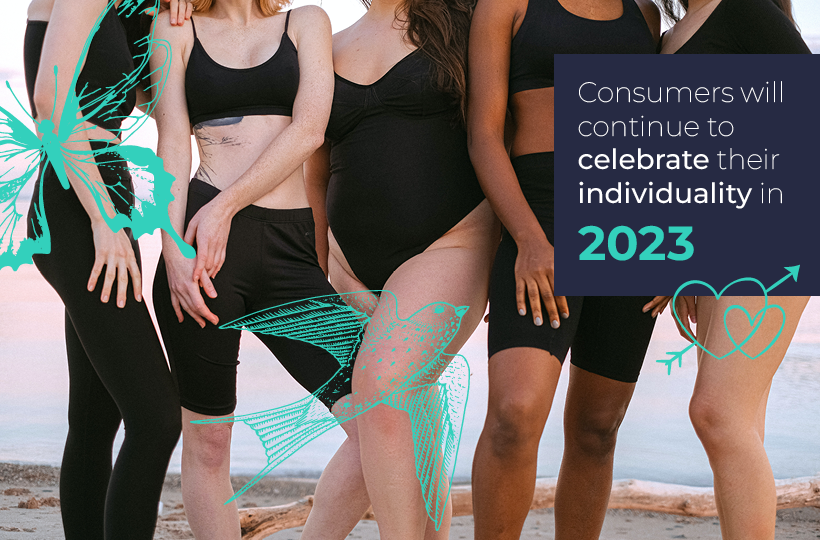
Virtual commerce, individualism and the ongoing cost-of-living crisis are all set to impact consumer spending in 2023.
1. Identity is key
New tribes and audiences emerge with individualism on the rise

Consumers will continue to celebrate their individuality in 2023. Brands will need to cater to consumer self-expression while also reflecting this within their own campaigns. Virgin Atlantic are leading the way by relaxing their ban on visible tattoos and allowing employees to choose which uniform they wear, regardless of their gender.
This will also lead to consumers seeking personalised products that speak to them. Many retailers are beginning to tap into this personalised marketing in a new era of digital advertising. Following in the footsteps of Amazon, retailers are creating new ‘retail media networks’, where sponsored or promoted products generate data to inform customer profiling.
2. Deliberate and purposeful spending
A trend towards investing in longer-lasting, high quality goods

Despite the current cost-of-living crisis, 2023 will see consumers treat themselves by buying fewer but higher quality purchases, prioritising factors such as durability, timelessness, sustainability and reusability, when buying new products.
Levis have already picked up on this trend, with dedicated Tailor Shops that allow customers to alter, repair or customise their purchases to help make the products last longer. A GWI report also argues that the beauty and clothing sector will be the most resilient when it comes to budget cuts, due to the ‘feel-good’ factor experienced when buying in these sectors.
3. The importance of brand values
Authenticity, transparency and product origins are key to driving sales

In 2023 expect consumers to place greater emphasis on quality and authenticity, with increased support for brands that align with their own ideals. This makes the honest and transparent communication of brand values a vital element of the 2023 marketing mix.
Consumers’ need for value is shown through influencer niches, spending becomes purposeful when expendable money is tight. A Mintel 2022 report states that getting your money’s worth and how you feel about supporting a brand's purpose are the twin drivers of consumer decision making.
4. The role of technology in consumer decision making
In step the metaverse and digital currencies, and with them a growing distrust of big tech

The rise of the Metaverse and digital currencies is set to impact virtual commerce in 2023. However, as technology’s role in the consumer decision making grows, so does awareness and scepticism around big tech. That said, NFTs and Web3 technologies are becoming increasingly popular in a variety of sectors - for example, the Slovenian Tourist Board recently released its first NFT.
Social media use is also evolving. Recent data from Google shows that nearly 40% of young people go to Tiktok or Instagram when looking for a place to eat, as opposed to Google Maps or Search engines. However, consumers' awareness of the negative impact is also on the increase; GWI reports social media anxiety has actually grown 11% since 2020.
5. The search for escapism
Self-expression and escapism through unique experiences

Having emerged from the pandemic straight into economic turbulence and global conflict, consumers will understandably be seeking some much-needed escapism in 2023. Within the travel sector this is already being demonstrated in the growing popularity of digital detoxes and wellness retreats.
Foresight Factory stated in its recent consumer trends report that 43% of people say they love any excuse to have a celebration. The celebration of small, everyday things will act as a form of escapism during these tough economic times - this is clearly reflected in John Lewis’ shift towards the ‘moments economy’ and updated slogan ‘For all life’s moments’.